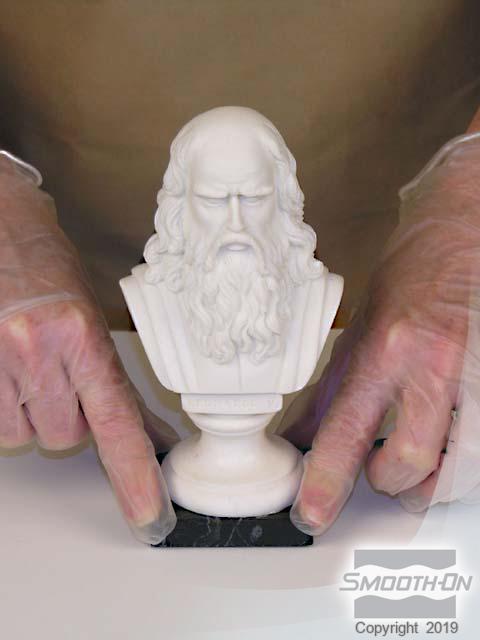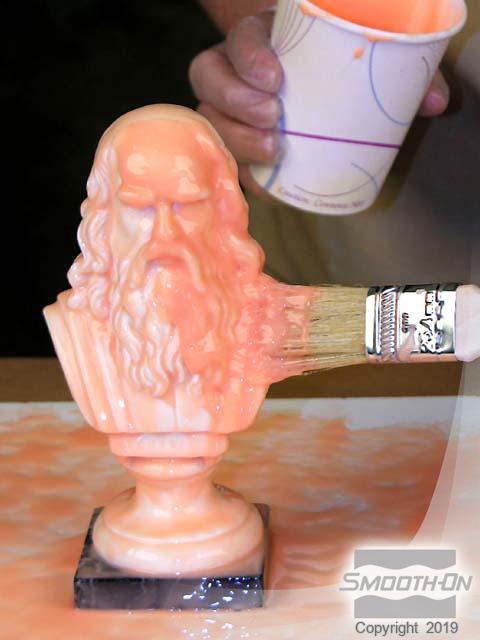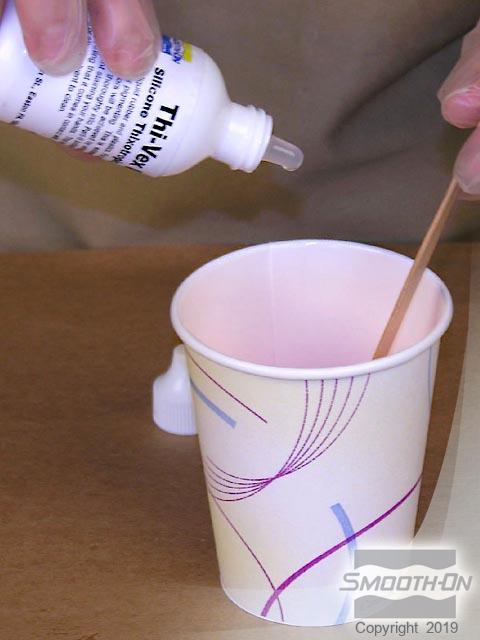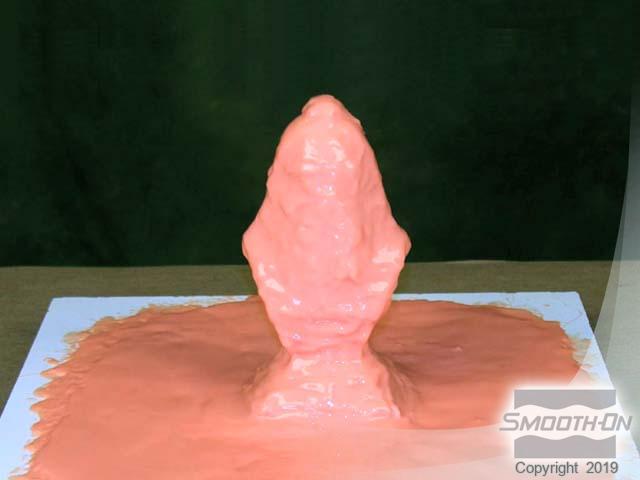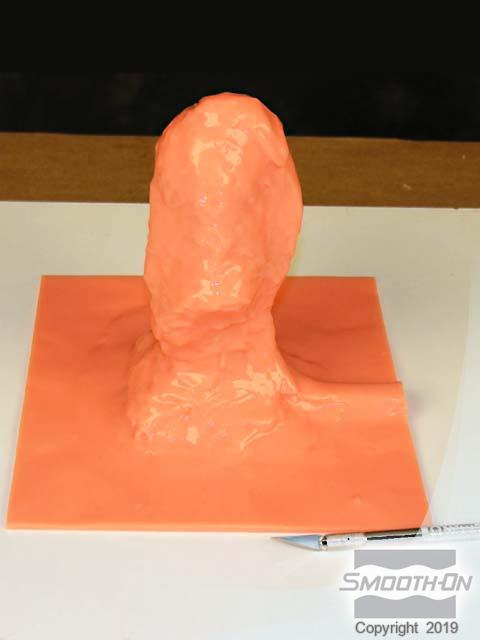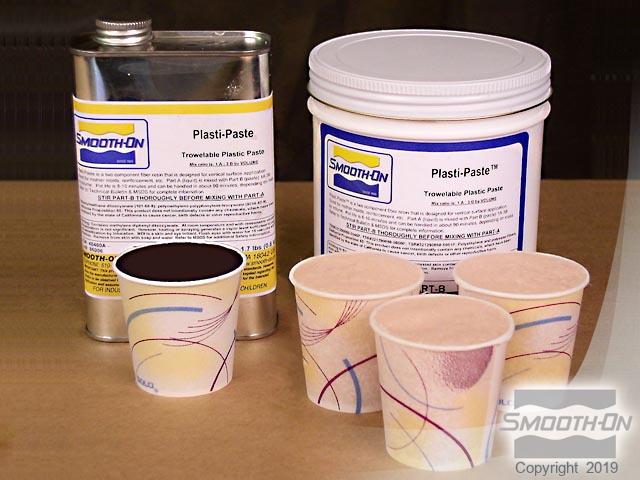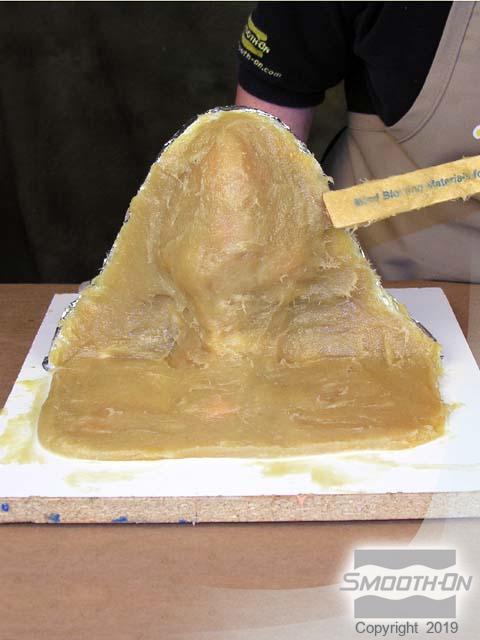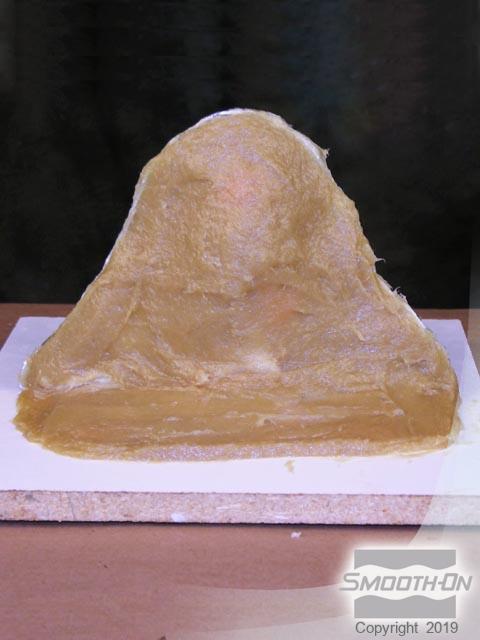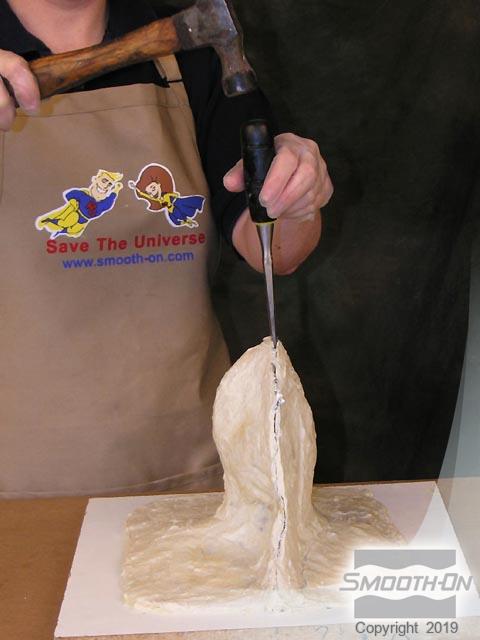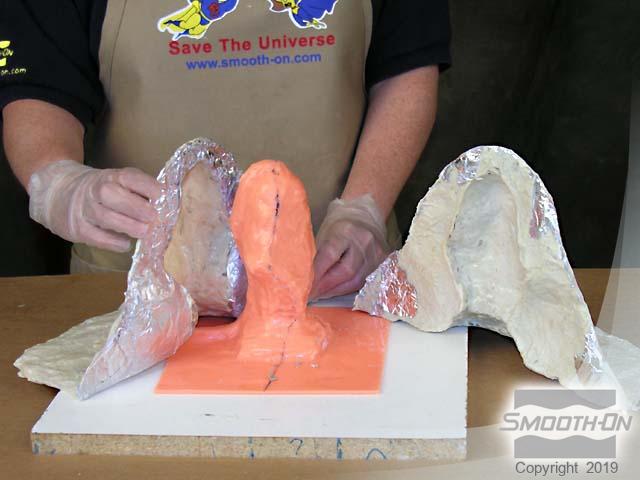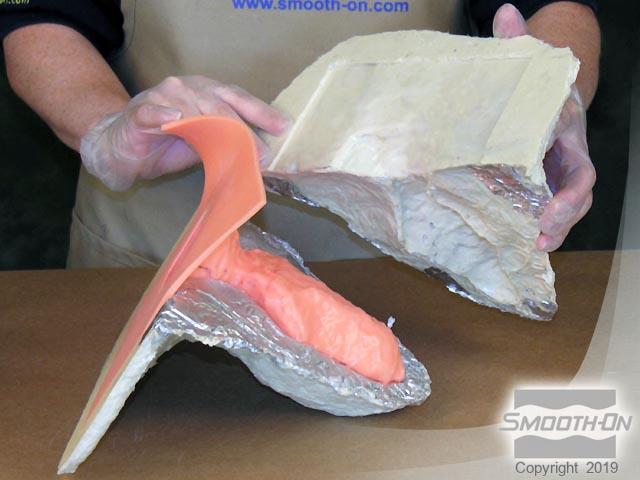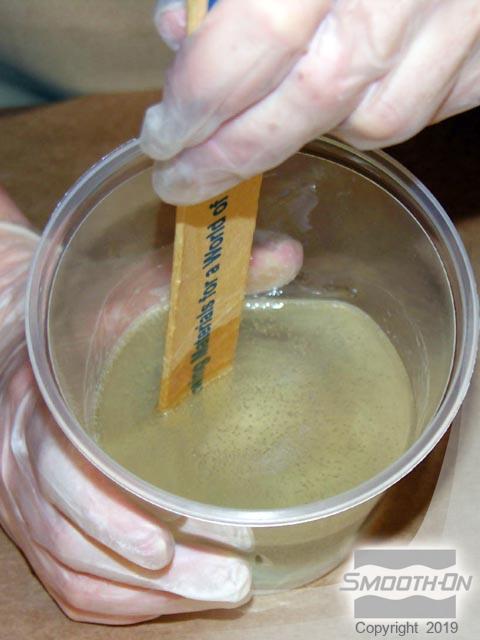How to Make a Silicone Brush On Mold of a 3D Object
Overview
This mold making tutorial video shows how to make a brush on silicone mold using Rebound™ 25. The finished mold can be used for casting resin, wax, foam, and many other materials.
The second part of this video can be found here: Making a Plasti-Paste® Support Shell
Materials Used in this Tutorial
- Hot Melt Glue
- Rebound™ 25
- Mixing Sticks
- Mixing Containers
- Paint Brush
- Melamine Board
- Popsicle sticks
- Thi-Vex
- Permanent Marker
- Aluminium Foil
- Sonite Wax
- Plasti-Paste
- Razor Knife
- Hammer
- Chisel
- Smooth-Cast 300
Step 1: Preparing and Applying Rebound™ 25
Before starting with our materials be sure to secure the original model to baseboard with a hot melt glue gun to prevent movement during the mold making process. Make sure the model is secure in center of working board.
Once you are completed securing the model, dispense equal amounts of Rebound 25™ A + B into a mixing container. Mix for 3 minutes, making sure you scrape the sides and bottom of container many times eliminating all color streaks. Brush a very thin layer onto model. Work rubber into fine detail, covering the entire model and creating a 3 inch (7.62 cm) flange in all directions around model. Allow rubber to cure 60 minutes until tacky. Rubber should be sticky to the touch, does not come off onto your glove. If rubber is still wet, do not apply the next layer.
After the 1st layer is tacky. Mix and apply your second layer of Rebound™ 25. After the model and board are covered, let rubber cure for 60 minutes until tacky. Once you have given the rubber time to cure, create a "Cut Seam" layer. You can create a "Cut Seam" by measuring and mixing a small amount of Rebound™ 25 A+B and adding 4 drops of Thi-Vex thickener to every 1 oz. of mixed Rebound™ 25. The thickened rubber will then hold a vertical surface. Apply thickened rubber at the top of the model and work downward. Bring cut seam all the way out to the end of the flange. Use thickened rubber to fill undercuts.
Next, mix and apply another small batch of rubber, this will be your third layer. After model and board are covered, let rubber cure 60 minutes until tacky. Mix up a small batch of thickened rubber (as you did with the "Cut Seam" Layer), and further build up “cut seam” with thicker rubber. Use thickened rubber to fill in undercuts and reduce sharp angles.
Finally you will mix and apply a final layer of rubber to model and baseboard. Let all layers cure at least 6 hours at room temperature ( 72˚F/22˚C) before applying the Plasti-Paste support shell.
Step 2: Preparing Model and Mold For Plasti-Paste
When all of your rubber is cured use a razor knife to trim the rubber. Sharp clean edges will help the rubber mold register with the support shell. Examine the model to determine the best place for the parting line; draw a line with a marker along the models’ high points, dividing it into two halves.
Apply modeling clay along the parting line to create a “parting shim” which will separate the support shell sections. During this step, smooth the surface and trim excess clay. Clay parting shim should be 2” - 3” high. Cover 1/2 of the clay shim with thin gauge aluminum foil, the foil forms a barrier between the clay and Plasti-Paste® shell which will aid in separating the two segments later on.
Apply a liberal coat of Sonite Wax® to the entire surface of the baseboard. Let the Sonite Wax® dry for 10 minutes and apply a second coat.
WARNING: Plasti-Paste® sticks to everything!
Step 3: Dispensing and Applying Plasti-Paste to Create Support Shell / Demold
Measure and mix Plasti-Paste®, 1A to 3B. Scrape sides and bottom of container to ensure a thorough mix. Apply the Plasti-Paste® over the surface of model, platform and shim, to 3/8 inch (.95 cm) thick; then allow the Pasti-Paste® to cure for at least 90 minutes at room temperature (72º F / 22º C). Once cured, fold the aluminum foil out of the way towards the cured Plasti-Paste®. Remove the clay shim.
Apply a liberal coat of Sonite Wax® to the surface of the aluminum foil and baseboard. Let the Sonite Wax® dry for 10 minutes and apply a second coat. Measure Plasti-Paste®, 1A to 3B and mix thoroughly. Apply Plasti-Paste®, over the surface of model, platform and shim to approximatly 3/8 inch (.95 cm) thick and allow the shell to cure for at least 90 minutes at room temperature (72ºF/22ºC).
When cured, remove excess aluminum foil. Use a hammer and chisel or screwdriver to seperate the shell sections. Slowly pry the support shell segments apart and release from baseboard. Remove the sections to expose the rubber mold.
Use a razor knife to carefully cut the rubber seam from bottom to top. And gently remove the original model from the rubber mold. WARNING: RAZOR KNIFE IS SHARP!
Step 4: Preparing Mold For Casting
Your'e more than half way done! Align the cut seam and secure into the Plasti-Paste® support shell. The cut seam should almost disappear. Use rubber bands to secure support shell segments together.
The mold is now ready for casting. Place the mold upside down in a bucket for support and stability making sure the mold is level for best results.
Step 5: Casting and Demolding
Measure equal amounts of A & B Smooth Cast® 300. Mix thoroughly, make sure to scrape the sides and bottom of container several times.
Slowly pour the liquid mixture into the mold. Rotate the mold during the pour to eliminate air bubble entrapment. Allow the resin to cure for 20 minutes. CAUTION: Smooth Cast® 300 becomes VERY HOT! Let cool before handling.
Remove the mold from the bucket. Remove the Plaste-Paste® shell. Carefully remove the casting from the rubber mold. The finished casting is an exact duplicate of the original.

